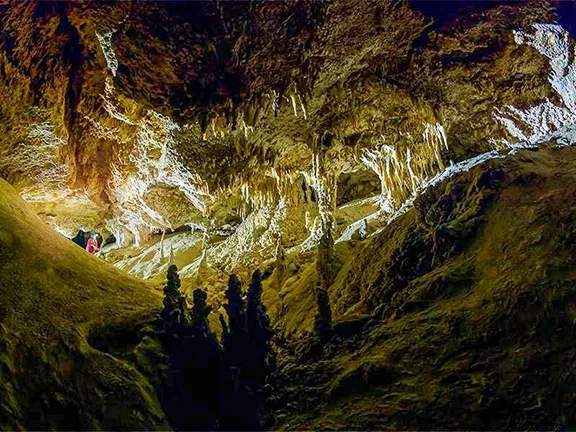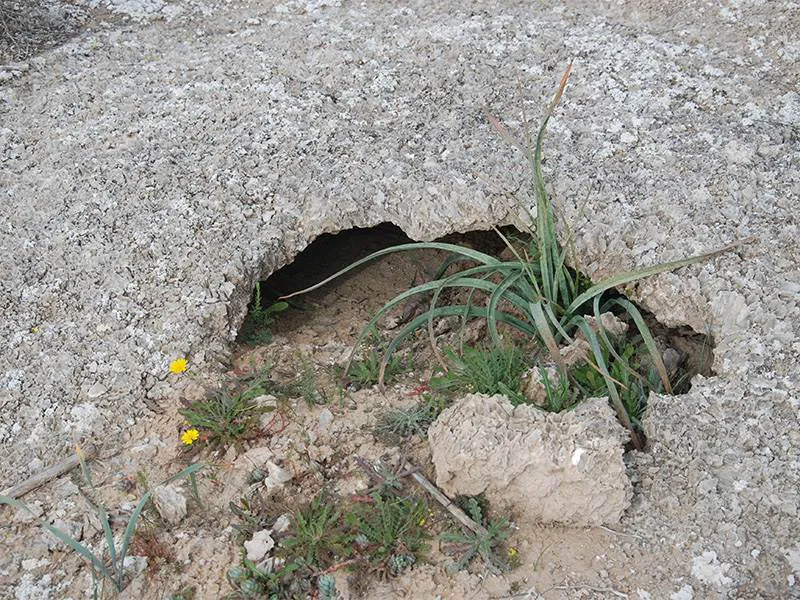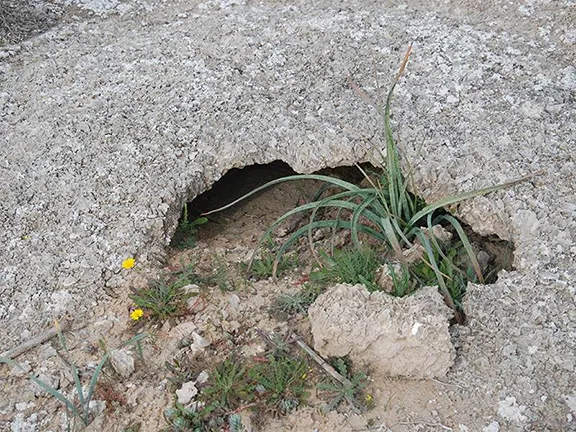Sorbas Gypsum Karst Paraje Natural is the most important and imposing karstic gypsum landscape in Spain
By Nick Nutter | Updated 23 Apr 2022 | Almería | Parks |
Login to add to YOUR Favourites or Read Later


Los Molinos in the Rio Aguas
Karstic formations are usually associated with limestone (calcium carbonate) landscapes. Gypsum (calcium sulphate) karstification is an uncommon feature in nature. The Sorbas Gypsum Karst is the most important of its type in Spain and one of the best-known examples in Europe. The nature reserve covers an area of 2,375 hectares and consists of a high plateau above the canyon of the Rio Aguas.


Arid Plateau of Gypsum
Just over 5 million years ago, the Atlantic Ocean breached the ridge between itself and the, then arid, Mediterranean Basin. The basin filled with seawater. The Mediterranean coastline of Andalucia was very different to that of today, being much lower. Only the highest Sierras and the high ground between them were above water. The area around Sorbas, for instance, was completely submerged with a rich marine life including corals that are now fossilised and molluscs, both sources of calcium.


@Sorbas Gypsum Caves
At the same time, the area west of Sorbas, the volcanic region of the Cabo de Gata, was producing sulphur laden hydrothermal vents that extended out from the edges of the volcanic region. The Alboran tectonic plate, working with the Eurasian Plate and the African Plate was (and still is) pushing the southern part of the Iberian peninsula upwards, creating fractures and faults through which the sulphur-rich water flowed that, in some areas, met the calcium-rich sea, resulting in a chemical reaction that produced calcium sulphate dihydrate. One such area was in the area now known as the Sorbas Gypsum Karst Nature Reserve.


Underground Wonderland
As the plates continued to push the land upwards, the seas became shallower and the calcium sulphate started to precipitate out, creating a band of gypsum over 100 metres thick on the seafloor. This was covered by other marine sediments that formed a soft, yellow to white marl.


Tumulus on Gypsum Karst at Sorbas
Eventually, about 2 million years ago, the seabed in the Sorbas area rose above the surface of the sea. Rainwater immediately started to erode the marl and the gypsum. Sinkholes, known as dolines, formed on the surface, allowing rainwater to penetrate the soluble gypsum. Underground caves formed, over 1000 of them, most interconnected, together with a spectacular universe of crystalline formations, stalactites, stalagmites, columns and corals. The sinkholes themselves often give shelter to fig trees whose roots can penetrate dozens of metres to access the water below stored in the underground springs.
Returning to the surface, other geological features include karst tumuli. Here the upper layers of the gypsum have absorbed water and expanded forming a ‘blister’. Eventually, part of the roof of the ‘blister’ collapses leaving a small cavern exposed.
Karren form when the gypsum is of inconsistent quality. Some of it dissolves faster than other parts. The result is a series of troughs and rills separated by sharp crests.
Not many plants can cope with the high calcium sulphate concentrations and the sub desert zone of the Sorbas Gypsum Karst Nature Reserve, it is a harsh environment. Barely 250 mm of rain falls each year so the plant communities have adapted. The vegetation on the arid plain and dry valley slopes consists of broom, esparto, gorse and thyme. In the late winter, early spring, these species are enlivened by the bright yellow Sorbas sunrose, an endemic species, the small white Sorbas narcissus, also endemic and toadflax. Although not endemic, the toadflax produces enormous flowers in relation to its size, to encourage pollination.
This harsh landscape is home to a surprisingly diverse range of animals including the seriously endangered spur-thighed tortoise. Rabbits provide food for the few foxes on the plateau and you may be lucky enough to see a badger or a genet that have found homes between the huge blocks of gypsum. Becoming more scarce are Bonelli’s eagle and peregrine falcon.
The karst acts as a huge sponge and the water emerges at springs that become a lush green oasis in this semi-desert area. The largest spring is Los Mollinos in the Rio Aguas canyon. The flora and fauna in these oases contrast sharply with that of the upland steppe. Freshwater molluscs and aquatic insects provide food for reed warblers, coal tits, kingfishers and crakes. Snakes, Mediterranean pond turtles and frogs live alongside or in the permanent pools sheltered by fallen blocks of gypsum. On the banks, reeds, rushes, oleander and white poplar grow in profusion.
The Sorbas Gypsum Karst Nature Reserve, at the far end of the Tabernas – Sorbas sub desert corridor is the aridest region in Europe. This apparently barren, arid land hides one of the most stunning places in Andalucia.